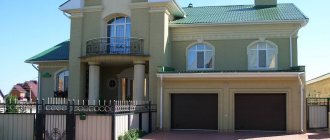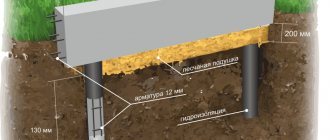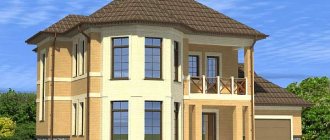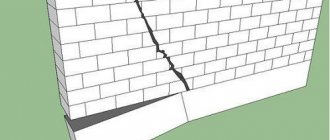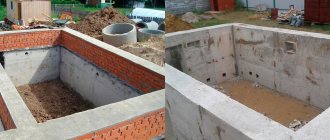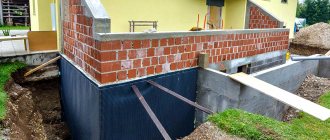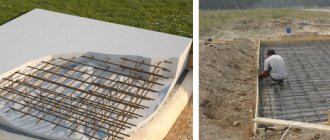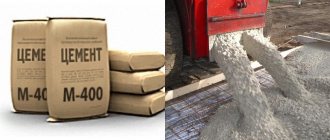One-story house with a basement
When choosing or ordering a project for building a house, it may be necessary to decide how high the basement floor should be. This parameter cannot be chosen arbitrarily, since there are several factors that influence it. Including requirements regulated by regulatory documents.
This article will tell you about all the nuances of determining this height and the design of the plinth in general.
Types of socles
To perform the assigned functions, the facade of the building must have a certain height. The external wall must rise above the ground level, be strong, and have high performance data. The height depends on the soil, the foundation of the plinth and the clearly designed type of facade. There are several types of sockets:
- Sunken. Used for buildings with wide walls. There is an external wall inside the façade.
- Speaker. The base, made in a certain plane, is pushed forward. This solution is ideal for buildings with an existing ground floor and not too wide walls.
- Uniform. This part of the building smoothly transitions into the facade. That is, both the lower and upper parts are located in the same plane.
Each type has unique features that determine the height, external and quality data of the basement floor.
In this video we will look at the difference between a high and low base:
How do the parameters of the foundation compare?
As an example, let’s look at how the parameters of the foundation are calculated when building an individual house.
Practice shows that the ratio of the height of the above-ground base to the width is 1:4.
The structure of a classic shallow foundation does not imply the presence of a base. The height of the foundation above ground level does not exceed the underground part, but the opposite option occurs quite often.
If the soil at the construction site has standard characteristics, usually the height and depth are the same and do not exceed 0.5 m.
Finishing the above-ground part of the plinth with metal siding
The plinth is of optimal height and ideally copes with the protective functions assigned to it. To ensure that the structure is in good condition for a long time, during the construction period the above-ground part of the foundation is constructed only from high-quality materials. The measures taken prevent possible damage and create an attractive appearance for the facade of the house.
A striking example of modern house construction is base metal siding. The facing material is quite in demand, popular, and has a large number of positive reviews. The workflow goes like this:
- Finishing begins with cleaning the surface. All defects and irregularities present on the rough wall are removed using high-quality lathing.
- Install the horizontal guide rail.
- The siding plate is inserted into the lath and secured with self-tapping screws.
- The next sheet is installed, slightly moving it towards the previous one. Minimal gaps are left at the joints for expansion during the hot season.
- Next, the entire height and width of the base of the house is finished in the same way.
Base height
Many operational aspects depend on the height of the barrier wall. Just like the height itself depends on the design of the building, the type of foundation, the quality of the soil, and the presence of a basement in the structure. Existing building codes provide certain requirements. Designers, using the manual, calculate the minimum or maximum height of the base.
Standard height
The standard height of the plinth is calculated from the ground according to the standards and is 30-40 cm. For wooden buildings, it is erected up to 80 cm. If there is a ground floor in the building, the indicators reach from 1.5 to 2 m. When determining the height of the plinth above the ground, take into account:
- location of the area;
- climatic conditions;
- amount of possible precipitation and snow;
- possible flooding;
- ground water level;
- air temperature, both indoors and outdoors.
Only specialists are able to correctly and accurately calculate norms, standards, requirements and requests. Developers, by turning to them, avoid serious costs for refurbishing the building.
Optimal height
When drawing up a project for a country house, designers try to rationally plan the space, and one of the important decisions is additional storeys. A basement floor in a private building is necessary. It can be used as a boiler room, pantry, or storage for winter supplies. If desired, you can equip living and play areas.
If you take into account all the additional costs of the foundation, the result is that the optimal length of the basement wall is cheaper than building a second floor. The general parameters of the basement are 2.5 m. The ceiling is about 2 m. The depth of the floor in the ground is no more than the size of the basement. This part of the building, like the basement, completely depends on the intended purpose of the underground premises.
Problems of the basement elevation
The height of the basement for a private house is often not taken into account by the owners at the design stage. Moreover, this characteristic is important, since in addition to additional functions, this part of the structure has its own important tasks:
- Protection from moisture. Waterproofing the foundation prevents materials from deteriorating from moisture from the soil. As for the basement part, it also creates a kind of water barrier, and also prevents the penetration of water from the outside, from melted snow, rain, etc.
- Ventilation. This process eliminates the appearance of condensation, which leads to the development of fungus and mold, which can negatively affect not only the materials of the walls and foundation, but also the health of the people living.
Providing ventilation
It is very important to consider the material from which the structure is constructed. For example, log houses will require a higher base to reliably protect the wood from damage from moisture, mold and mildew.
Insulation
The underground part of the base is combined with the base by thermal and waterproofing layers. When calculating the height, it is necessary to take into account underground structures, as well as climatic features, in particular the height of the snow cover adjusted for airflow, which is usually 10 cm.
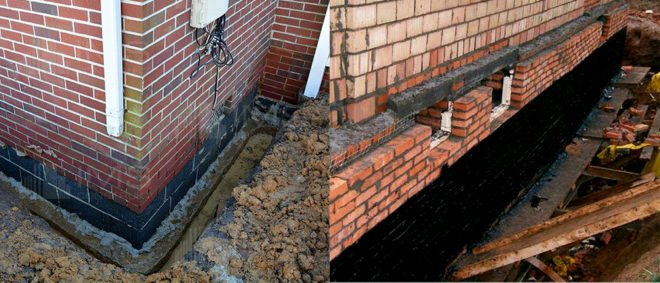
Waterproofing
The rising part is made of red brick. You should not make it too large, as this will increase the cost of insulation. You don’t have to do it, but then heat loss will increase by about 20-25%, which will cause additional heating costs.
The influence of the blind area
The construction of a concrete blind area allows water to be drained into the drainage and prevents it from stagnating, therefore minimizing its negative impact on the foundation. But the feasibility of constructing such a structure can only be determined by analyzing the characteristics of the soil on which the structure is being built, the presence of unevenness, and the type of base.
Blind area
To clearly see the benefits of the blind area, it is necessary to calculate the average rate of flowing moisture. To do this, the average amount of precipitation is multiplied by the area of the walls of the building, as well as by 30%.
Useful plinth
If you think about the arrangement of additional premises at the design stage, you can experience enormous savings and benefits.
You can also arrange a utility room there for storing tools or other useful things.
Base height.
The height of the base of a country house above the ground can be very different. It is influenced by several factors, ranging from the type of foundation to the depth of groundwater. Many homeowners who are engaged in construction on their own do not pay due attention to the issue of the height of the basement of the building, because they are sure that it is enough to make the basement slightly raised above the ground in order to continue construction work.
The height of the base from the ground.
If the walls of a building are located too low, the structure and main building materials will constantly get wet, their thermal insulation properties will deteriorate, and internal destructive processes will begin to occur. Gradually, these processes lead to the complete destruction of the building material from the inside. As a result, the service life of the structure is significantly reduced, and the owners sometimes cannot determine why this is happening. And the answer is simple - insufficient height of the base above the ground.
All of the above does not depend on the presence of a usable basement. The basement floor is an important decision from the point of view of rational space planning in the house and on the site. Suitable for solving almost any problem: if desired, you can equip here not only a cellar or boiler room, but also a study, home theater, or bedroom. Even taking into account the additional costs of the foundation, a higher basement height for a one-story house will cost less than installing a second floor.
The total height of the basement floor (according to SNiP) is at least 2.5 meters. Read more.
Floor characteristics according to standards:
- ceiling height relative to ground level - within two meters;
- deepening of the basement floor into the ground - no more than half the height of the basement.
The height of the basement of your home will also depend on the purpose of the basement. If you are planning to make a bedroom or room for comfortable relaxation, it is better to be guided by the maximum value; By arranging a utility compartment at ceiling height, you can save money (within reasonable limits).
Recommendation: A good review article, from it you will find out what height the plinth should be from the ground according to the standards. The most basic purpose of the plinth is to protect the walls from rain and snow, as well as from the capillary rise of moisture into the walls. The aesthetic moment remains in the background. Be sure to think about additional waterproofing of the basement from the foundation and walls.
What does the height of the base affect?
The developer always has the right to choose, and he decides independently what the parameters of the basement wall should be. But the security of the building materials used for construction and the condition of the interior depend on this, at first glance, not very important part of the house.
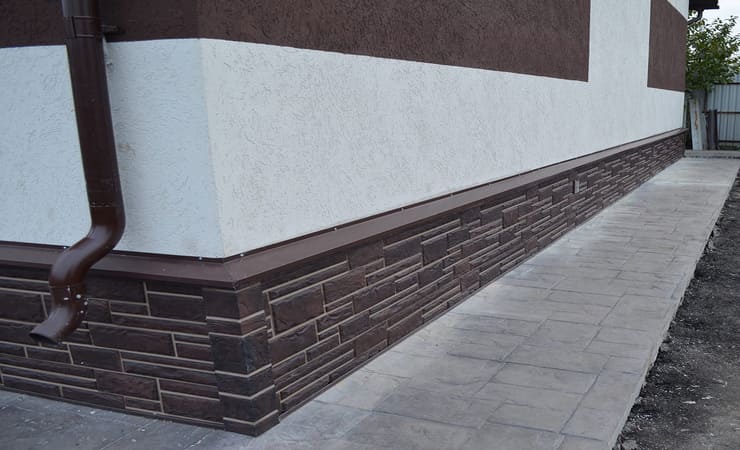
The height of the base depends on the amount of possible precipitation
The basement part of the building is assigned protective functions. It protects the structure from frost and dampness. The space between the wall and finishing materials is filled with a layer of thermal insulation. It is enough to make a base of the correct length, lay it out with modern facing materials, install a drainage system and a drainage system.
Installing all the necessary additions will save the building from many destructive factors. The structure will be protected from the effects of unpredictable weather conditions and humidity. Flooding of premises located below ground level will be excluded.
What height is best to make a plinth?
Precisely calculated standards for the height of the basement wall exist, but each site owner has the right to make their own choice. When deciding on construction, you should remember that this is the above-ground part of the base of the building. The higher its height, the more difficult it is for extraneous factors to penetrate into residential premises. Also, the basement walls are separated from the walls of the first floor by waterproofing.
The ground parts of the building periodically get wet from snow and rain. The thermal insulation layer is damaged, internal destructive processes occur, which significantly shorten the operating period. Watching such metamorphoses, the owners are perplexed as to why the house loses its aesthetics and beauty. Sometimes the answer is obvious - the basement structure is too small.
Options for foundations according to the height of the base in a private house
The choice of the height of the basement depends entirely on the building material from which the house is being built and the type of foundation chosen. The location of groundwater and the proximity of the building to the highway are also taken into account. And, of course, the appearance. A building with a high fence looks much more interesting and respectable.
In the construction of private country houses, strip foundations are often used. On this basis, the base part is installed in various ways:
- Masonry. The foundation is laid to ground level. Next, install masonry made of brick or other raw materials. The design does not have good thermal data. Additionally, insulation, finishing, and cladding are carried out.
- Monolith. The base is made of concrete. In this case, the basement installation is connected to the pouring of the foundation.
- Pile foundation. The height and thickness of the plinth is determined from the part of the piles located above the ground surface. On this basis, the basement structure is suspended.
How to determine height above ground level
The minimum height of the foundation for a wooden house is taken into account when building any cobblestone or log house. What does it affect:
- Protects the bottom row from constant wetting and subsequent destruction;
- The opportunity to equip the basement of the house, combining it with the foundation. This makes sense from a practical and financial point of view: the integrity of the foundation is more durable and requires less labor for construction;
- Protection of structures from deformations due to the movement of unstable soils;
- Accounting for future settlement of the house.
